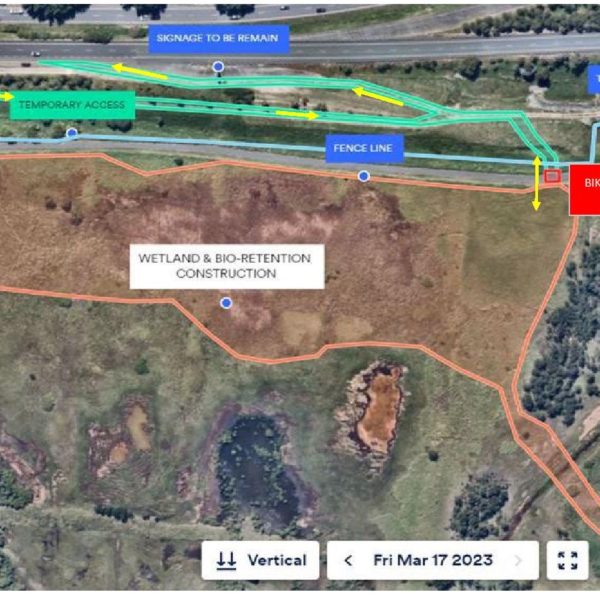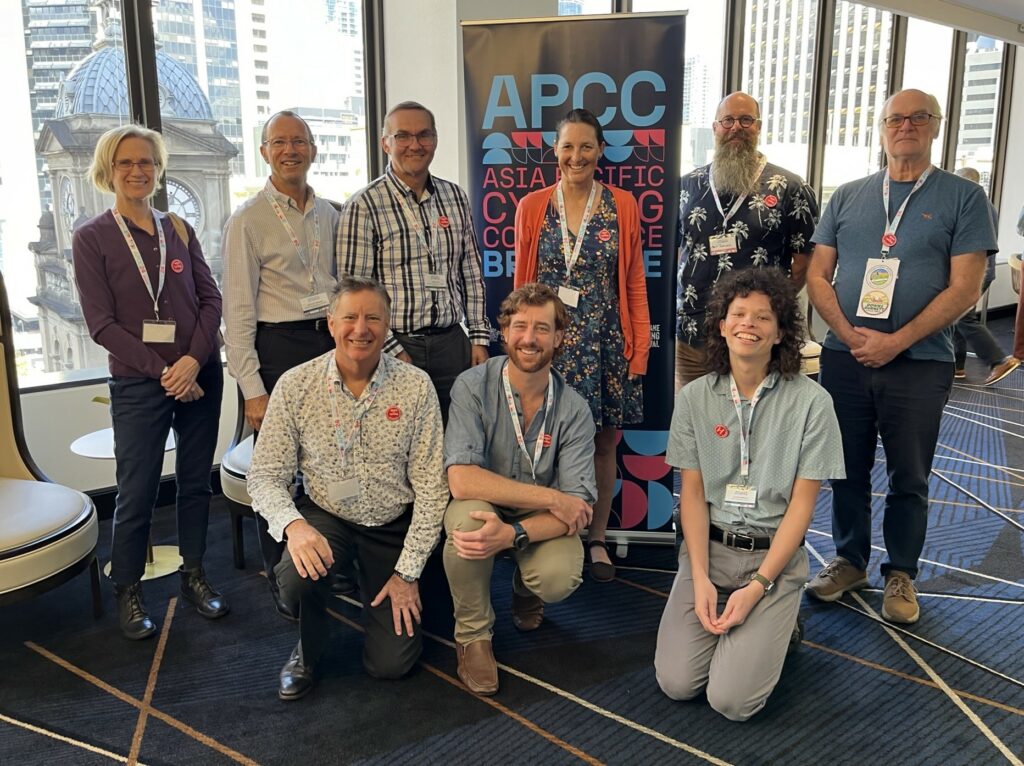

To summarise, our transport issues arise from car dependency. The assumption in the 1960s was that people wanted to get places by car, so everything has been planned around that. Now we have no choice but to travel by car. It is the most expensive, least efficient, noisiest and most polluting mode of transport. The placement of schools, shopping districts, workplaces and “bedroom suburbs” have locked us into this mess. Efficient, cost effective travel modes that are safe and convenient require significant investment in infrastructure for walking, cycling and public transport, and redesigning our cities to make these modes more viable.
Below is a summary of some of the speakers. We will add to them as time permits. All speakers presented valuable insights and we’d love to share them with you.
Hon Bart Mellish
Queensland Minister for Transport
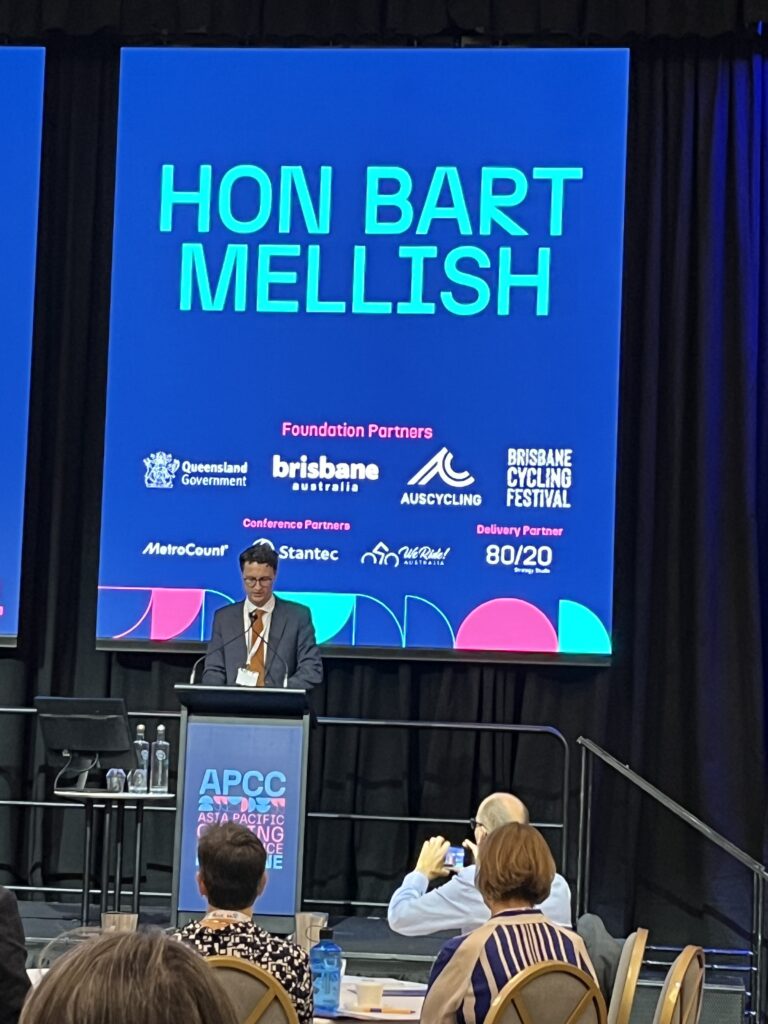
The minister talked about a wholistic strategy for active transport – a genuine network for commuting and recreation. The word “transport” was not used to describe a purpose of cycling, though it is considered the major way in which cycling can improve circulation in the city and increase mode share. Is this gap in policy or an oversight in the speech? Without connections for people to get to school and shopping, the transport revolution essential to keep people moving around the city and to reduce emissions, pollution and noise will not occur.
The numbers of kilometres of cycling infrastructure he was able to claim as built was vastly inferior to the amount needed. It seems at this point that cycling infrastructure is growing at a slower rate than roads, meaning active transport is going backwards in real terms.
He mentioned $300 million dollars to 2027 to encourage people to leave their car at home. That means $100 million a year or $18 per Queenslander per year. This sort of chump change might have us ready for the Brisbane Olympics in 2432.
Marne Fechner
AusCycling

AusCycling is a national body rather than a federated collection of individual state and territory organisations. They represent cycling for Road, Track, MTB, competition, transport and recreation.
As observed by all non-government speakers at the conference, Marne pointed out that most Aussies want to ride more and would ride more if they felt it were safe. The physical and mental health benefits of cycling are enormous at both the individual level and at a population level.
Marne spoke about how a SENSE OF SAFETY is essential to get people on bikes. Separated paths and quiet streets are what’s needed. Kids need to be as safe on bikes as they are in the water – a reference to the campaign for kid’s safety in pools. Safe cycling needs to be a two part strategy:
- Safe places to ride, and
- Education in safe behaviours.
One cannot be a substitute for the other.
AusCycling has developed AusBike, a national cycling safety education campaign for schools which is being rolled out to schools and education systems who want it. It has been developed to comply with national curriculum requirements and they are campaigning to have it made part of the national and school curricula.
Brent Toderian
Renowned global cities expert
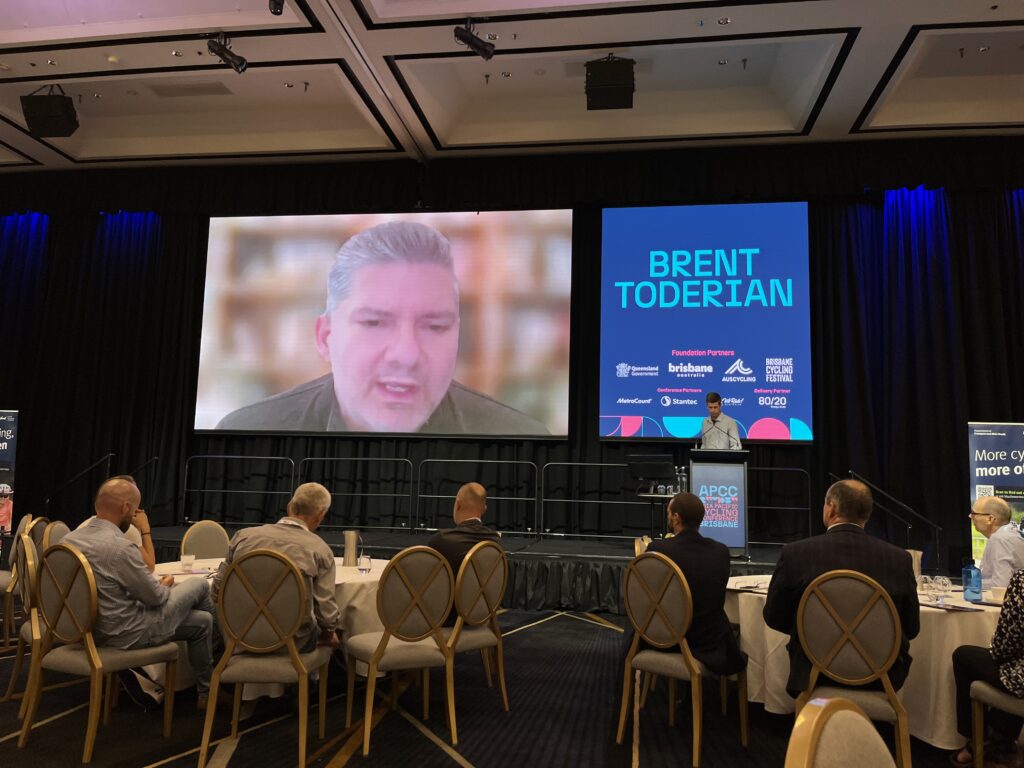
Cities function better when biking functions better. Biking makes cities safer, more cost efficient, cleaner and quieter. Transport changes need to be done hand in hand with changes to land use rules which allow people to live their lives in a local area. Having huge bedroom suburbs far away from work, schools and shopping causes congested roads and fills cities with cars, noise and pollution.
Smart cities have suburbs where people can live their lives and get around mostly on foot, by bike or by public transport. Dumb cities make every activity dependent on car travel.
Smart cities focus their transport infrastructure planning on the number of PEOPLE moved. Dumb cities focus on the number of CARS moved.
Smart cities build connected networks of biking infrastructure so people can see how efficient and people-friendly it is. Dumb cites add a bike lane to a road without connecting it to origins or destinations. Dumb cities prove to their citizens that biking infrastructure is a waste of money, because unconnected bike lanes are highly visible and aren’t used.
Smart cities move lots more people at lower cost because bike infrastructure is cheaper and has a much higher person per hour rate. Dumb cities move fewer people at higher cost because car infrastructure is the most expensive and has the lowest person per hour rate of any type of transport.
One solution does not fit all.
Inner city areas have origins and destinations much closer together and they should get safe infrastructure on every street. Active transport should be prioritised over cars – not balanced with cars.
Outer suburbs are so separated from important destinations, that a different approach is called for. They’re designed to be car dependent. In these locations, low speed local streets combined with a larger grid network of safe biking infrastructure can channel riders to public transport hubs. Brisbane’s heavy train network is ideal for this in many areas. Large, secure bike parking at train stations, along with safe separated routes to get riders there are key here. In these locations, the needs of bike riders and car drivers need to be balanced.
Bikes are transport for everyone. There are huge gains to be made at both the personal and the population level in health, cost-saving and time-efficiency. It is also the only way to get biking above a 3-5% mode share.
Professor Alexander Paz

Active transport to foster healthier communities. An increase in active transport, increases safety. More active transport, the more visible active transport users are. In cities with high active transport use, car drivers are used to seeing AT users and are therefore looking for them. In cities with low use, car drivers are not used o seeing them, and therefore aren’t expecting to see them.
What increases active transport use?
- Low speed local streets
- Separated infrastructure on principal roads
- Green routes
- Interconnected public transport
- Activity centre connections
- Mass transit corridors
- Transport hubs such as train and bus stations
Mobility as a service APP

Sam Johnson
The World Bank

Working to improve mobility in developing countries. China didn’t receive funding, however the advice on how to design and implement active travel means the bank can point to China as a successful example of a country skipping the expensive car stage and going to a greener, higher level of development and organisation. Massive gains in Beijing and Tianjin with active transport. These two cities have built 80,000kms of active transport infrastructure in the last 5 years.


Principles:
- Move from car first to people first
- Singapore has committed to high percentage of shade cover on active transport infrastructure to make active transport attractive in their tropical climate.
- Share bikes are critical for public transport connections
- Fewer cars – more social interaction on the street
- Change perception from car development as the prestigious, higher form of development to active transport as the highest form of development.
- 1 km of highway funding can build 100kms of bike way funding.
Panel Discussion
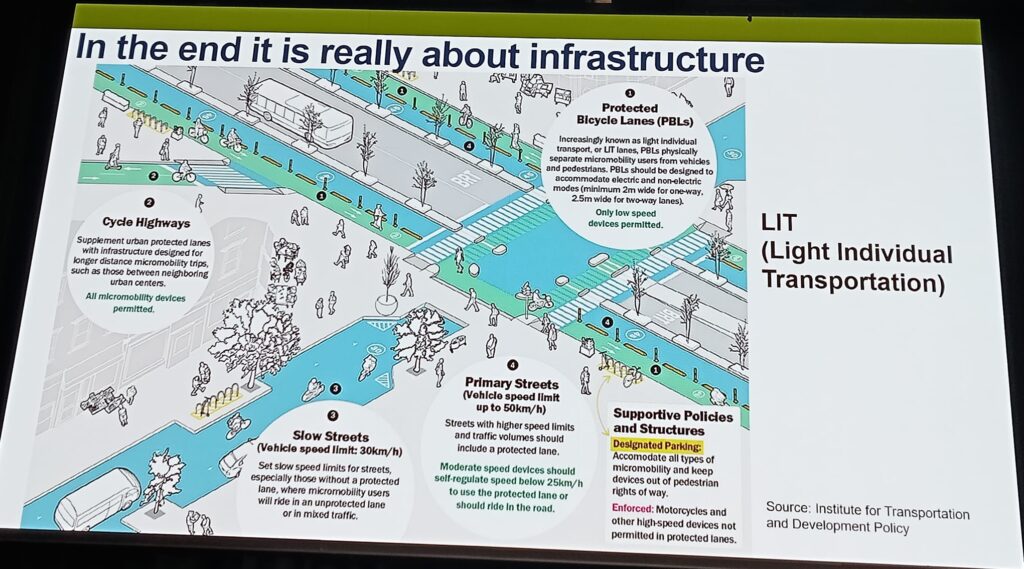
Sarah Davies
MetroCount

MetroCount is a Western Australian company which has designed a very accurate, low voltage data collection system to enable governments to collect information and track trends. It has been used to justify making temporary or trail bike ways permanent. They’re used all around the work, including France and the Netherlands.
Professor Christopher Pettit
Professor Narelle Haworth
Richard Buning
Tourists not considered in active transport systems. eg Sight-seeing loops. These loops create business opportunities for people to set up on AT transport tourism routes
Scooters are better for tourists than bikes. They’re better in pedestrian areas, smaller, more nimble. Better for people who don’t know how to ride a bike.
Stephen Hodge
We Ride
Study by Ernst & Young
Cycling is one of the few sports that don’t drop off with age. It increases health span and life span.
Alton Twine
New CEO of Bicycle Queensland
Panel Discussion
Day 2
Ryan Murphy
BCC Transport Chair
5000kms of shared paths, 16,000kms of roads. So, only 11,000kms of bike paths to go!
He made the claim that BCC spend more that the state government on Active Transport. Probably true, but as BCC is responsible for a much larger local road network than the state government, and as BCC has a much lower car to bike infrastructure ratio, it needs to spend at a much higher rate. The $190 million dollar Kangaroo Point Bridge is good to have. One wonders how many hundreds of kilometres of connected cycling network it could have paid for. Expensive showy projects are far less important than connecting origins to destinations for the largest number of people. Connections already existed here. Some new connections would have had a much larger impact on congestion and health. Interestingly, being at a Cycling Conference, Mr Murphy managed to reference cycling/bicycles/cyclists etc only seven times in a ten minute speech. I guess there’s not a whole lot this Council can say about biking infrastructure – either existing or planned.
Nice point from the councillor: Induced demand works for cycling as well. How about it, BCC? Let’s connect people’s houses to their work, schools and shopping centres!
Penny Ford
Department of Transport

Penny pointed out the projects that have been done and the ones in the pipeline. There’s no doubt it’s great to have them, and they certainly make up for the deficiencies in the local government network to some degree. However, as noted earlier $328 million spent over 4 years for 5.5 million people is $60 per Queenslander, but $12 per person per year. She needs to talk to her shareholding minister about upping that.
They’re also continuing with their « Stay wider of the rider » campaign, but no mention of enforcement. You can tell who rides a bike and who doesn’t. People who think rules and education campaigns can substitute for infrastructure clearly don’t ride.
James Laing
Cycle planning and design expert from Stantec

Build quick, get quick results. Build whole networks quickly so people can see good infrastructure being used by lots of people – build for success.
Nick Morris
Access and universal design expert from Morris Gooding Access Consulting
Paralympic accessibility guidelines careful planning.
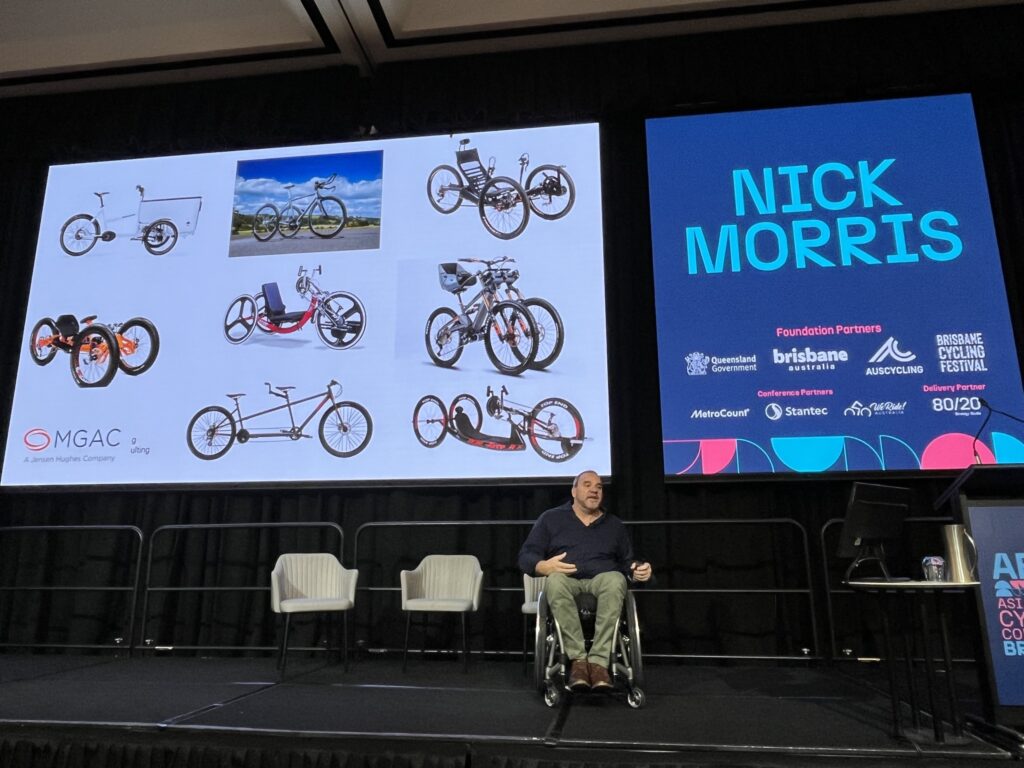

Kate Veronneau
Panel Discussion
Craig Meinicke
John Macarthur
Vida Christeller
City design manager from Wellington City Council

Peter Bourke
BIA Bicycle Industries Australia
Battery fires – NSW is the only jurisdiction collecting information on these fires. Main stream brands don’t make the list. Fires increased dramatically after PM Morrison removed the requirement for import permits, including electrical compliance checks. Morrison claimed to have consulted widely with industry. The bodies consulted were trucking associations, but no cycling associations seem to have been consulted. Certainly, the peak bicycle industry body, BIA, was not consulted. The fires from these non-compliant devices are affecting public perception of the safety of e-mobility devices and it will affect, not only the cost of insuring these devices, but also the cost of home insurance for anyone who has one. Peter is fielding calls regularly from insurers trying to assess the risks.
Tariffs were put on e-bikes in 2018. Why are we making them more expensive when we’re wanting to reduce emissions?
Professor Matthew Burke

Pedestrian cycle zones on school drop off points.
Australia, NZ, Qatar and Saudi Arabia are the only OECD countries which have 50kmh limit on local streets.
Ridescore – alerts for parents when child arrives at school.Carpooling app for parents with priority parking/drop off at school.
Bad land use planning. Land use planning for last 60 years has assumed everything will be done by car, so now it has to be.
The Department of Education has a huge responsibility for BCC congestion. Small schools located in the centre of catchment areas make walking and riding to school safe and possible. Super schools not located in the centre of their catchments make driving a necessity. Larger school catchments also increase the likelihood that children will need to cross major congested roads and intersections. Current design of public space makes these areas incredibly dangerous for children to navigate on foot or by bike. A smart city would have small schools with limited catchment areas to reduce congestion and increase child physical and mental health through active transport. Obviously, small schools are better for child development and social behaviour. Super schools mean children are anonymous to most teachers and discipline is more difficult and less effective, creating more social issues and disrupted learning.

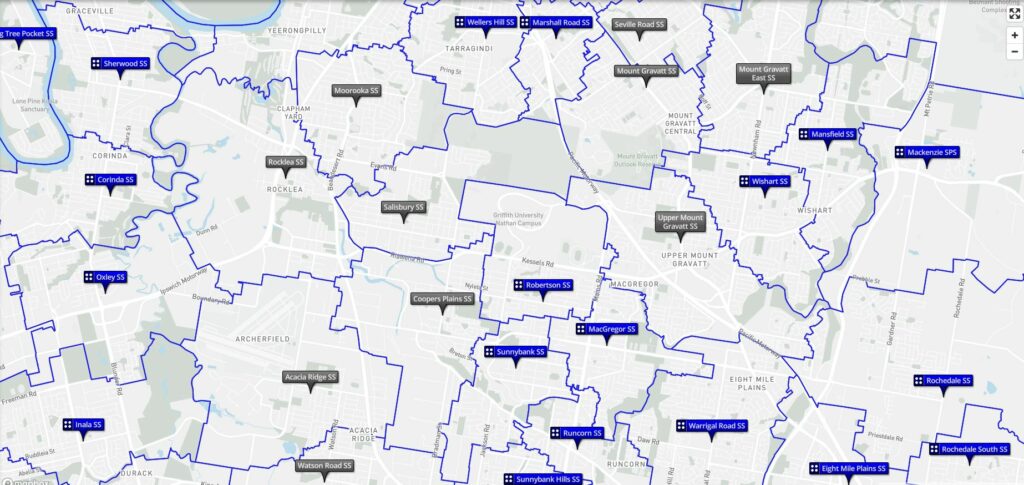
Private schools are responsible for a much larger carbon footprint and contribute to congestion at a much higher rate than state schools. Private school students travel on average much further every morning and afternoon. The schools often are able to be approved under a planning category which means they aren’t required to upgrade roads and so the cost is borne by the taxpayer. Additional costs to society include increased local traffic congestion, increased localised air pollution, increased greenhouse gas emissions and increased mental and physical health problems in children resulting from sedentary travel modes.
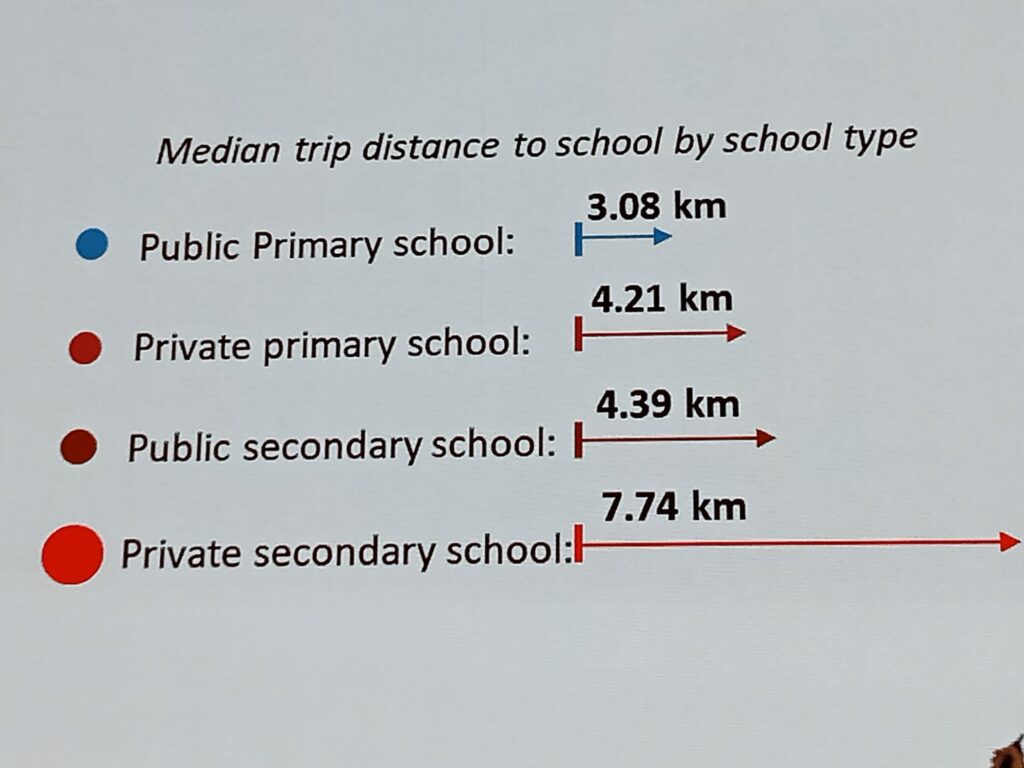

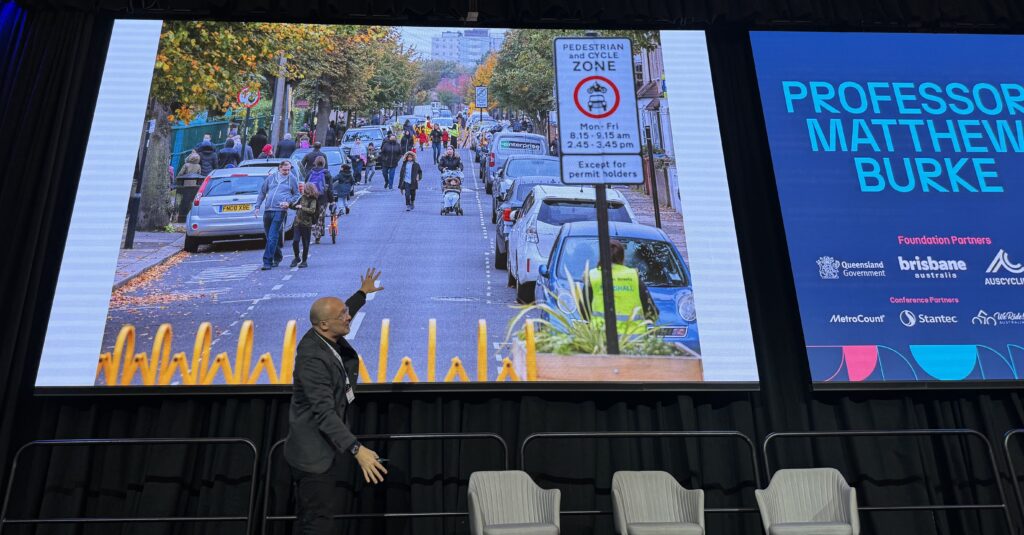
Irene McAleese

Use space and data differently. Push-back is inevitable, but finds ways to implement that suit the needs of the community. People can appreciate the process was handled well, even if they didn’t get the outcome they wanted.



